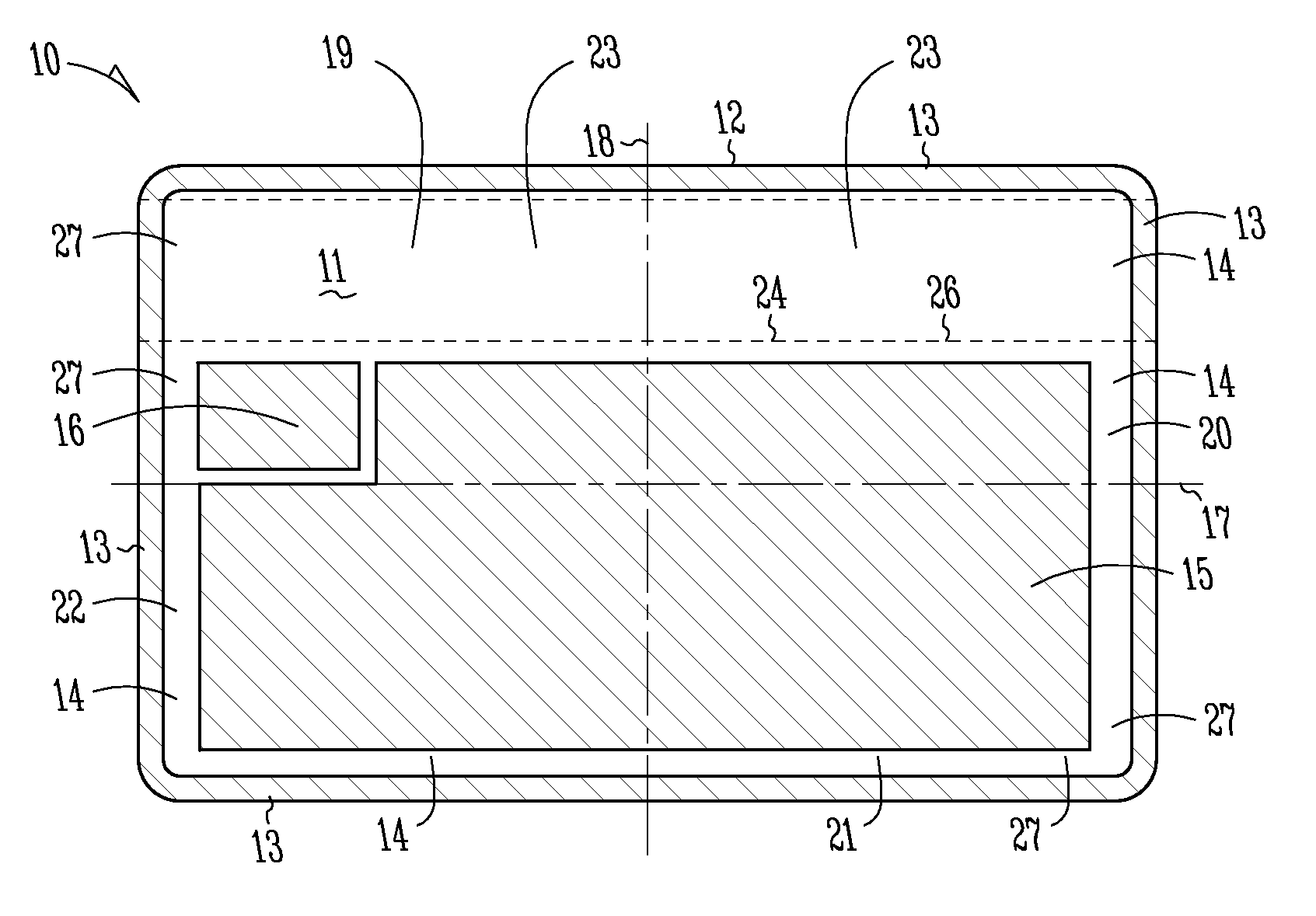Smartcard and method for the production of a smartcard
- Summary
- Abstract
- Description
- Claims
- Application Information
AI Technical Summary
Benefits of technology
Problems solved by technology
Method used
Image
Examples
Embodiment Construction
[0024]FIG. 1 shows a smartcard 10 with a card surface 11 within a card contour 12. Along card contour 12, card 10 has an edge area 13 that surrounds a patch 14. In turn, patch 14 encloses an embossing surface 15, within which embossing—not shown here—may be applied, and a chip surface 16, within which a chip—not shown here—may be placed. The areas defined by embossing surface 15 and chip surface 16 are arranged inside patch 14 such that communicating patch zones 19, 20, 21 and 22 are formed in patch 14. The antenna geometries shown in FIG. 2 and FIG. 3 may be formed inside these patch zones 19, 20, 21 and 22, whereas embossing surface 15, chip surface 16 and edge area 13 are not intended for the formation of such an antenna.
[0025]Patch zones 19, 20, 21 and 22 are arranged essentially parallel to the axes of symmetry 17 and 18 of smartcard 10, wherein particularly patch zone 19 is relatively large compared to patch zones 20, 21 and 22. A magnetic strip 24 is arranged on a patch 23 th...
PUM
 Login to View More
Login to View More Abstract
Description
Claims
Application Information
 Login to View More
Login to View More - R&D
- Intellectual Property
- Life Sciences
- Materials
- Tech Scout
- Unparalleled Data Quality
- Higher Quality Content
- 60% Fewer Hallucinations
Browse by: Latest US Patents, China's latest patents, Technical Efficacy Thesaurus, Application Domain, Technology Topic, Popular Technical Reports.
© 2025 PatSnap. All rights reserved.Legal|Privacy policy|Modern Slavery Act Transparency Statement|Sitemap|About US| Contact US: help@patsnap.com



